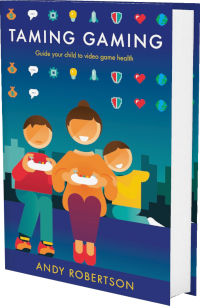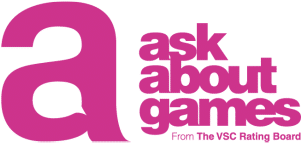 Android
Android iOS
iOS Mac
Mac Switch
Switch Wii
Wii Wii U
Wii U PC
PC PS4
PS4 PS5
PS5 Xbox One
Xbox One Xbox X|S
Xbox X|SWe've documented 20 accessibility features for How To Say Goodbye, including Guaranteed Progress, Low Pressure, No Quick Reactions, No Button Combos and One Tap Targeted. Its accessibility is strongest in Controls and Getting Started but it also has features in Visual, Navigation, Audio and Reading to reduce unintended barriers.
This report is created with input from accessibility experts and the player community to help people find games that have the accessibility features they require. Once you have found potential games on the database, there are excellent specialist accessibility sites that offer in-depth reviews to guide your purchasing decisions.
External examiner, Florian Veltman, first checked How To Say Goodbye accessibility 2 years ago. It was re-examined by Florian Veltman and updated 18 months ago.
 Game Details
Game Details
Release Date: 03/11/2022
Out Now: Android, PC, Switch and iOS
Skill Rating: 12+ year-olds
Players: 1
Genres: Brain Game, Traversal (Narrative, Platform, Puzzle and Sequencing)
Accessibility: 20 features
Components: 2D Overhead and Grid
Developer: ARTE Interactif (@ARTE_Interactif)
Costs: Purchase cost
 Controls
Controls
We've documented 5 accessibility features for Controls in How To Say Goodbye which deal with how you control the game, different options for alternative inputs and whether you can remap these settings to suit your needs.
Gamepad
Can play with the following:
1 Button & Single Stick: Can play with button and stick.
Mouse And Keyboard
Can play with the following:
Mouse Alone: Can play with just the mouse/mouse-button/mouse wheel.
Touchscreen
Can play with the following. Additional gestures may be required for games played with a screenreader like VoiceOver.
One Tap Targeted: Can play with touchscreen, tap in specific locations.
Button Combinations
Specific button operation required to play
No Simultaneous Buttons: Only one button or key required at a time, in addition to direction stick(s).
Controller Vibration
Vibration Optional: Controller vibration not used in the game or you can disable it.
Similar Games With More Accessibility Features for Controls
If you want to play How To Say Goodbye, but it doesn't offer the Controls accessibility features you require, these similar games extend the Controls accessibility:
- Paquerette Down the Bunburrows (15 Controls Features)
- Hindsight (9 Controls Features)
- Humanity (8 Controls Features)
- Before We Leave (8 Controls Features)
 Difficulty
Difficulty
We haven’t documented any accessibility features for Difficulty in How To Say Goodbye which deal with how you can adjust the challenge of play, and whether this is locked once chosen or can be adjusted as you play. The following games are similar to How To Say Goodbye, and offer accessibility features for Difficulty:
- Before We Leave (1 Difficulty Feature)
 Getting Started
Getting Started
We've documented 5 accessibility features for Getting Started in How To Say Goodbye which deal with what support is offered to get started with the game. This includes customising the experience when you first open the game via any onboarding processes it provides as well as tutorials and other assistance when you first start playing.
Assistance Getting Starting
These features aid your play of the game in terms of cognitive load on learning controls, dealing with pressure and coping with the environment and challenges.
Practice Area: You can practice freely without opponents or time pressures. This can be a specific practice option, or the ability to play levels with the easiest opponents to improve understanding and skill.
Reaction-Time Not Critical: Individual game actions don’t need quick reactions, or there are settings to lower the requirement for quick reactions. This means you don't need to quickly press a button in response to an on-screen prompt, target a fast-moving target or skillfully complete a scenario against the clock.
Low Pressure: Game tasks aren't time-limited or there's a low-pressure mode. This avoids the pressure of being put on the clock for overarching missions, or failing tasks because you didn't reach a destination in time.
No Jump Scares: No sudden loud noises or popping-up scary visuals that unexpectedly appear without warning, or the option to disable them.
Assistance For Progressing
These features aid your progress through the game offering different ways of maintaining your progression.
Guaranteed Progress With God Mode: There is no fail state for any game level, where you lose progress or have to start again. Or there are options to make failing impossible: infinite health or lives, unlimited time. Sometimes called God Mode or Unfailable.
Similar Games With More Accessibility Features for Getting Started
If you want to play How To Say Goodbye, but it doesn't offer the Getting Started accessibility features you require, these similar games extend the Getting Started accessibility:
- Paquerette Down the Bunburrows (8 Getting Started Features)
- Before We Leave (8 Getting Started Features)
 Reading
Reading
We've documented 1 accessibility feature for Reading in How To Say Goodbye which deals with how much reading or listening comprehension is required, how well the game provides visual and audible access to the text and whether subtitles and captions are a good fit for purpose.
Reading Level
How much reading is required to play the game's main path or story and how complex the language is. The presence of voiced characters doesn't reduce this requirement, as it's recorded as a separate datapoint.
Simple Minimal Reading: Minimal reading is required. The quantity and complexity of reading are at a level that a primary/elementary student (9-year-old) could understand.
Similar Games With More Accessibility Features for Reading
If you want to play How To Say Goodbye, but it doesn't offer the Reading accessibility features you require, these similar games extend the Reading accessibility:
- I Am Dead (7 Reading Features)
- Paquerette Down the Bunburrows (5 Reading Features)
- Bleep Bloop (5 Reading Features)
- Cocoon (4 Reading Features)
 Navigation
Navigation
We've documented 3 accessibility features for Navigation in How To Say Goodbye which deal with how the game provides guidance and assistance to navigate its worlds. These are only for games that have traversal and exploration in 2D and 3D spaces.
Menu Navigation
Menu Audio Cues: Navigating menus provide an audio cue for each selection.
Digital Menu Navigation: Menu choices with Gamepad can be made without using an analogue stick to guide a cursor to a selection. For example, using D-Pad, buttons or the Stick to change menu selection in a single action.
Menus Don't Wrap: Menus don't wrap and stop the cursor at the bottom of the list if you press down. Or menus do wrap but make it clear that you are back at the top of the list with sound or narration.
Similar Games With More Accessibility Features for Navigation
If you want to play How To Say Goodbye, but it doesn't offer the Navigation accessibility features you require, this similar game extends the Navigation accessibility:
- Paquerette Down the Bunburrows (4 Navigation Features)
 Visual
Visual
We've documented 5 accessibility features for Visual in How To Say Goodbye which deal with how you can adjust the visuals to suit your needs, and offer additional information if you can't hear the game.
Contrast
Medium Contrast: Game uses generally well contrasting and bright visuals, or has a slider to make this the case.
Visual Distractions
No Flashes: No flashing strobe effects or you can disable them. This includes the absence of flashing from dramatic visual effects, explosions or weather effects like lightning.
Audio Cues for Visual Events
Audio Cues for Visual Events: Audio is provided to indicate visual events. Game events or progress highlighted by visual icons, effects or animations are also accompanied by audio to signify that progress. This is useful for blind players.
Menu Audio Cues: Navigating menus provide an audio cue for each selection.
Motion Sickness Friendly
Motion Sickness Friendly: Doesn't have 3D movement elements that may trigger motion sickness, like motion blur, depth of field and field-of-vision. Or includes the ability to disable motion blur, depth of field and field-of-vision effects.
Similar Games With More Accessibility Features for Visual
If you want to play How To Say Goodbye, but it doesn't offer the Visual accessibility features you require, these similar games extend the Visual accessibility:
- Paquerette Down the Bunburrows (8 Visual Features)
- Bleep Bloop (6 Visual Features)
- I Am Dead (6 Visual Features)
 Audio
Audio
We've documented 2 accessibility features for Audio in How To Say Goodbye which deal with how you can adjust the audio of the game and whether audio cues compensate for aspects of the game that are hard to see.
Adjustable Audio
Balance Audio Levels: Set music and game sound effects separately. This enables you to select your preference as well as ensure critical game sounds aren't obscured by other audio.
Play Without Hearing
Play Without Hearing: No audio cues are necessary to play the game well.
Similar Games With More Accessibility Features for Audio
If you want to play How To Say Goodbye, but it doesn't offer the Audio accessibility features you require, these similar games extend the Audio accessibility:
- Paquerette Down the Bunburrows (3 Audio Features)
- I Am Dead (3 Audio Features)
System Accessibility Settings
In addition to the accessibility features provided in the game, you can also use system-wide accessibility settings:
Android
Android has accessibility settings including ways to navigate and interact, although not all games support this.
Nintendo Switch
Nintendo Switch has some built-in features, including a lockable zoom, that can be used on all games.
PC
Windows has extensive accessibility features. Some, like colour correction, work with games. Lots of accessibility software can be used with PC games, from voice recognition to input device emulators.
iOS
iOS has a very extensive suite of accessibility settings including ways to navigate with voice and comprehensive screen reading, though most of the features don't work with games.
Read more about system accessibility settings.
Accessibility Report supported by VSC Rating Board, PlayabilityInitiative and accessibility contributors












